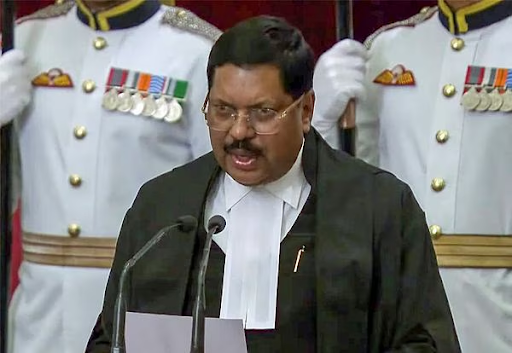Description

Disclaimer: Copyright infringement not intended.
Context
- The Supreme Court is deliberating on the determination of compensation in domestic violence cases.
- The central question is whether compensation should be based on the severity of violence or the perpetrator's financial capacity.
Case Background:
- The petitioner challenges orders from the Bombay High Court and a trial court.
- He was directed to pay Rs 3 crore to his wife under Section 22 of The Protection of Women from Domestic Violence Act, 2005 (DV Act).
Supreme Court's Notice:
- The Court acknowledged the crucial question raised by the petitioner's counsel.
- The court aims to address whether compensation should align with the degree of violence suffered or the financial status of the perpetrator.
Understanding the DV Act:
- The DV Act aims to enhance the protection of women's rights guaranteed under the Constitution.
- It covers various forms of abuse, including physical, sexual, verbal, emotional, and economic abuse.
- Section 3 of the Act defines domestic violence, encompassing acts or conduct that harm or endanger the victim's health, safety, or well-being.
Expanding on Domestic Violence Definitions:
- The DV Act explicitly states that domestic violence includes actions aimed at coercing the aggrieved person or her relatives to meet unlawful dowry demands or surrender property or valuable security.
- This provision emphasizes the Act's broader scope, encompassing not only physical harm but also financial coercion and manipulation.
Defining the Aggrieved Person:
- The Act defines an "aggrieved person" as any woman who is currently or has been in a domestic relationship with the respondent.
- This definition underscores the Act's gender-specific focus on protecting women who have experienced domestic violence.
- It recognizes the complexity of domestic relationships and ensures legal recourse for those subjected to abuse within such relationships.
Implications for Legal Interpretation:
- By defining domestic violence comprehensively and specifying the aggrieved person's identity, the DV Act provides a robust framework for legal interpretation and enforcement.
- Courts can use these definitions to evaluate cases and determine appropriate remedies and compensation for victims.
- This clarity helps streamline legal proceedings and ensures consistent application of the law across different cases and jurisdictions.
Understanding Compensation and Relief under the Domestic Violence Act:
Section 22 - Compensation Orders:
- Section 22 of the Domestic Violence Act empowers Magistrates to order compensation and damages for injuries caused by acts of domestic violence.
- This provision allows for additional relief beyond other remedies available under the Act.
Scope of Compensation:
- Compensation encompasses not only physical injuries but also mental torture and emotional distress inflicted upon the aggrieved person.
- It acknowledges the holistic impact of domestic violence on victims' well-being and seeks to address both visible and invisible forms of harm.
Section 12 - Application for Relief:
- Section 12 grants the aggrieved person or their representative the right to seek various reliefs under the Act, including compensation.
- Importantly, it preserves the aggrieved person's right to pursue compensation through civil suits independently of the Act.
Petitioner's Argument:
- Advocate representing the husband, contests the quantum of compensation awarded to the wife under Section 22.
- The petitioner questions the validity of the Rs 3 crore compensation, raising concerns about its proportionality and alignment with the principles of justice and equity.
Key Considerations:
- The court's decision in this case will likely address the balance between compensating victims adequately and ensuring fairness to the accused.
- It may delve into factors such as the severity of harm, financial capacity of the perpetrator, and principles of deterrence and rehabilitation.
Interpreting Compensation Criteria:
- The petitioner's counsel argues that compensation should reflect the damages and injuries caused by the spouse's actions, focusing on mental torture and emotional distress rather than the parties' standard of living.
- The counsel contends that while the standard of living might apply to maintenance cases under Section 20, the compensation awarded in this instance was based on the petitioner's annual income as a US citizen in 2008-2009.
Section 20 - Monetary Reliefs:
- Section 20 allows magistrates to order monetary relief to meet expenses and losses suffered by the aggrieved person and any children, aligning with their accustomed standard of living.
- The magistrate can decide on lump sum payments or monthly maintenance based on the case's nature and circumstances.
Precedents and Legal Interpretations:
- The Delhi High Court in Chaturbhuj vs. Sita Bai emphasized preventing destitution in maintenance proceedings rather than punishing neglectful spouses.
- The Supreme Court's rulings in cases like Kalyan Dey Chowdhury vs. Rita Dey Chowdhury Nee Nandy and Dr. Kulbhushan Kumar vs. Raj Kumari provide guidelines for determining maintenance amounts based on parties' status and capacity to pay.
Legal Challenges and Discretionary Powers:
- The court has discretionary powers in computing damages, considering both the victim's suffering and the parties' financial status.
- The court acknowledges the absence of clear precedents in calculating damages, often leading to borrowing legal principles from maintenance cases to domestic violence scenarios.
Conclusion:
- The debate surrounding compensation criteria reflects the nuanced balancing act between addressing victims' needs and ensuring fairness in legal proceedings.
- As courts navigate the complexities of domestic violence cases, they must consider both the specific injuries suffered by victims and the broader context of financial implications for all parties involved.
|
PRACTICE QUESTION
Q. The Judiciary, in handling domestic violence cases, must weigh both the direct harm to victims and the financial ramifications for all parties involved under the Domestic Violence Act. Comment.
|














